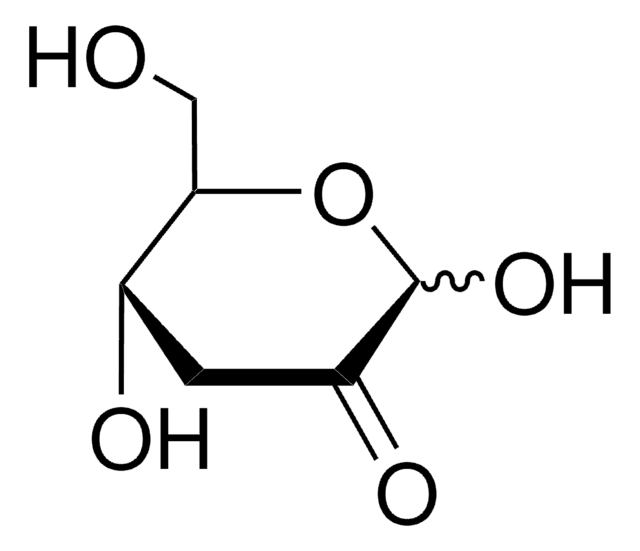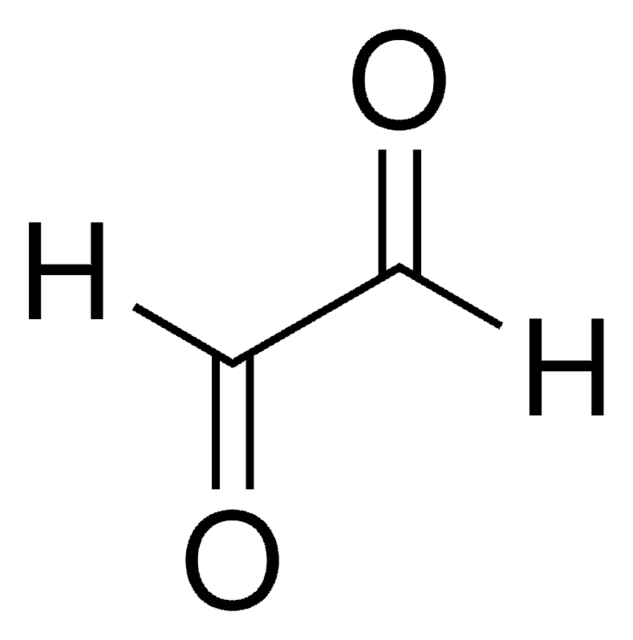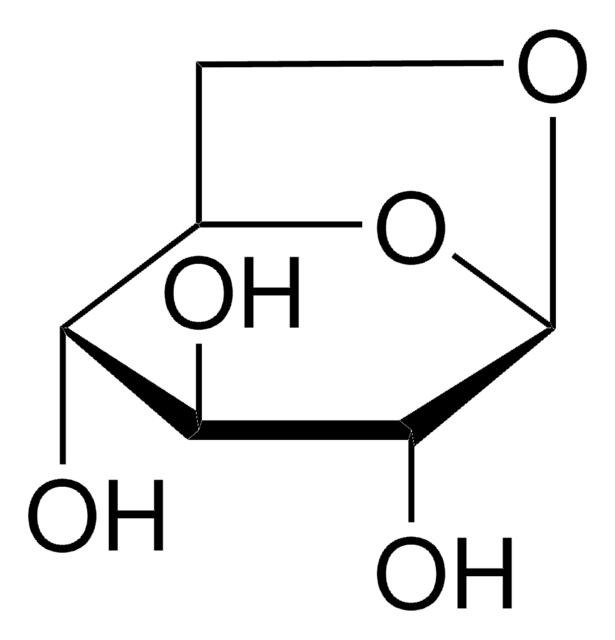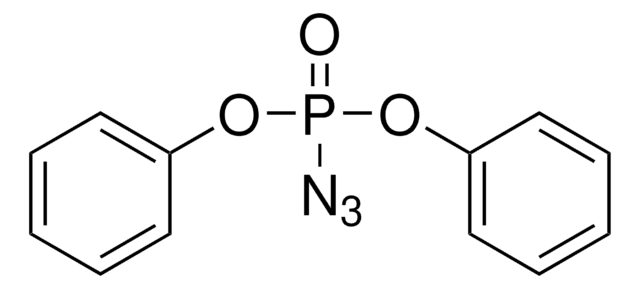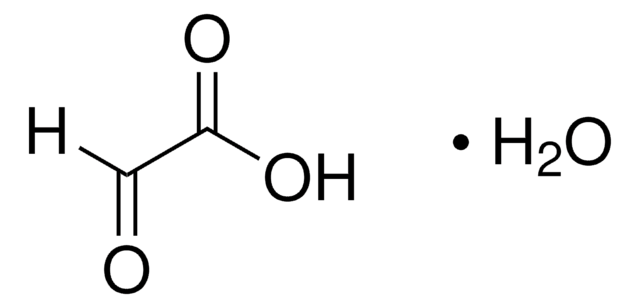Wszystkie zdjęcia(1)
Kluczowe dokumenty
61793
2-Keto-D-glucose
≥98.0% (TLC)
Synonim(y):
D-Glucosone
Zaloguj sięWyświetlanie cen organizacyjnych i kontraktowych
About This Item
Wzór empiryczny (zapis Hilla):
C6H10O6
Numer CAS:
Masa cząsteczkowa:
178.14
Numer MDL:
Kod UNSPSC:
12352201
Identyfikator substancji w PubChem:
NACRES:
NA.25
Polecane produkty
Próba
≥98.0% (TLC)
Formularz
solid
kolor
white to beige
temp. przechowywania
2-8°C
ciąg SMILES
OC[C@@H](O)[C@@H](O)[C@H](O)C(=O)C=O
InChI
1S/C6H10O6/c7-1-3(9)5(11)6(12)4(10)2-8/h1,4-6,8,10-12H,2H2/t4-,5-,6-/m1/s1
Klucz InChI
DCNMIDLYWOTSGK-HSUXUTPPSA-N
Szukasz podobnych produktów? Odwiedź Przewodnik dotyczący porównywania produktów
Zastosowanie
2-Keto-D-glucose (D-Glucosone) is a key intermediate of a secondary metabolic pathway leading to the antibiotic cortalcerone. D-Glucosone is a substrate that may be used to identify, differentiate and characterize hexokinase(s).
Działania biochem./fizjol.
2-Keto-D-glucose is the key intermediate of a secondary metabolic pathway leading to the antibiotic β-pyrone cortalcerone. This antibiotic offers protection to fungi against bacteria. The enzymatic oxidation of d-glucose by pyanose 2 oxidase results in 2-keto-D-glucose, and is considered as rare sugar.
Opakowanie
Bottomless glass bottle. Contents are inside inserted fused cone.
Inne uwagi
To gain a comprehensive understanding of our extensive range of Monosaccharides for your research, we encourage you to visit our Carbohydrates Category page.
Ta strona może zawierać tekst przetłumaczony maszynowo.
Kod klasy składowania
11 - Combustible Solids
Klasa zagrożenia wodnego (WGK)
WGK 3
Temperatura zapłonu (°F)
Not applicable
Temperatura zapłonu (°C)
Not applicable
Środki ochrony indywidualnej
Eyeshields, Gloves, type N95 (US)
Wybierz jedną z najnowszych wersji:
Masz już ten produkt?
Dokumenty związane z niedawno zakupionymi produktami zostały zamieszczone w Bibliotece dokumentów.
Klienci oglądali również te produkty
Cellulose Chemistry and Properties: Fibers, Nanocelluloses and Advanced Materials, 178-178 (2012)
G Treitz et al.
Journal of biotechnology, 85(3), 271-287 (2001-02-15)
The enzymatic oxidation of D-glucose to 2-keto-D-glucose (D-arabino-hexos-2-ulose, D-glucosone) is of prospective industrial interest. Pyranose oxidase (POx) from Peniphora gigantea is deactivated during the reaction. To develop a kinetic model including the main reaction and the enzyme inactivation, possible side-reactions
Torbjörn Linden et al.
Kidney international, 62(2), 697-703 (2002-07-12)
Bioincompatible glucose degradation products (GDPs) in fluids for peritoneal dialysis (PD) develop during sterilization and storage. Their biological activity has successfully been monitored through the use of various in vitro methods but their molecular and chemical nature is less well
Teruyuki Usui et al.
Bioscience, biotechnology, and biochemistry, 71(9), 2162-2168 (2007-09-11)
Glyceraldehyde (GLA) was determined in glucose degradation and glycation. GLA was detected as a decahydroacridine-1,8-dione derivative on reversed phase HPLC using cyclohexane-1,3-dione derivatizing reagent. The glucose-derived GLA level was higher than the glycation-derived GLA level, because GLA was converted to
Fungal pyranose oxidases: occurrence, properties and biotechnical applications in carbohydrate chemistry
Giffhorn F
Applied Microbiology and Biotechnology, 54(6), 727-740 (2000)
Nasz zespół naukowców ma doświadczenie we wszystkich obszarach badań, w tym w naukach przyrodniczych, materiałoznawstwie, syntezie chemicznej, chromatografii, analityce i wielu innych dziedzinach.
Skontaktuj się z zespołem ds. pomocy technicznej